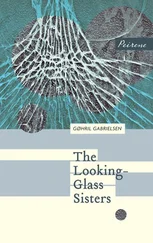RACISM AND SEXISM 101
Berry, Mary Frances, and John W. Blassingame. Long Memory: The Black Experience in America (New York: Oxford University Press, 1982).
Commager, Henry Steele. The Empire of Reason: How Europe Imagined and America Realized the Enlightenment (New York: Doubleday, 1978).
Escobar, Ticio. La belleza de los otros (Asuncion: CDI, 1993).
de Friedemann, Nina S. “Vida y muerte en el Caribe afrocolombiano: Cielo, tierra, cantos y tambores.” América negra (Bogotá), no. 8, 1994.
Galton, Francis. Herencia y eugenesia (Madrid: Alianza, 1988).
Gould, Stephen Jay. Ever Since Darwin (New York: Norton, 1977).
——. The Mismeasure of Man (New York: Norton, 1981).
Graham, Richard, et al. The Idea of Race in Latin America, 1870–1940 (Austin: University of Texas, 1990).
Guinea, Gerardo. “Armas para ganar una nueva batalla” (Government of Guatemala, 1957).
Herrnstein, Richard, and Charles Murray. The Bell Curve: Intelligence and Class Structure in American Life (New York: Free Press, 1994).
Iglesias, Susana, with Helena Villagra and Luis Barrios. “Un viaje a través de los espejos de los Congresos Panamericanos del Niño,” in UNICEF/UNICRI/ILANUD, La condición jurídica de la infancia en América Latina (Buenos Aires: Galerna, 1992).
Ingenieros, José. Crónicas de viaje (Buenos Aires: Elmer, 1957).
Ingrao, Pietro. “Chi é l’invasore.” Il Manifesto (Rome), November 17, 1995.
Kaminer, Wendy. It’s All the Rage: Crime and Culture (New York: Addison-Wesley, 1995).
Lewontin, R. C., et al. No está en los genes: Racismo, genética e ideología (Barcelona: Crítica, 1987).
Lombroso, Cesare. L’homme criminel (Paris: Alcan, 1887).
——. Los anarquistas (Madrid: Júcar, 1977).
Lozano Domingo, Irene. Lenguaje femenino, lenguaje masculino (Madrid: Minerva, 1995).
Martínez, Stella Maris. Manipulación genética y derecho penal (Buenos Aires: Universidad, 1994).
Mörner, Magnus. La mezcla de razas en la historia de América Latina (Buenos Aires: Paidós, 1969).
Organización de las Naciones Unidas (CEPAL/CELADE). Población, equidad y transformación productiva (Santiago, 1995).
Palma, Milagros. La mujer es puro cuento (Bogotá: Tercer Mundo, 1986).
Price, Richard. First Time: The Historical Vision of an Afro-American People (Baltimore: Johns Hopkins University, 1983).
Rodrigues, Raymundo Nina. As raças humanas e a responsabilidade penal no Brasil (Salvador de Bahía: Progresso, 1957).
Rojas-Mix, Miguel. América imaginaria (Barcelona: Lumen, 1993).
Rowbotham, Sheila. La mujer ignorada por la historia (Madrid: Debate, 1980).
Rubin, William, et al. “Primitivism” in Twentieth-Century Art (New York: Museum of Modern Art, 1984).
Shipler, David K. A Country of Strangers: Blacks and Whites in America (New York: Knopf, 1997).
Spencer, Herbert. Man versus the State (London: Caldwell, 1940).
Tabet, Paola. La pelle giusta (Turin: Einaudi, 1997).
Taussig, Michael. Shamanism, Colonialism, and the Wild Man (Chicago: University of Chicago Press, 1987).
Trexler, Richard. Sex and Conquest (Cambridge: Polity, 1995).
United Nations Children’s Fund. State of the World’s Children 1997 (New York: UNICEF, 1997).
——. State of the World’s Children 1998 (New York: UNICEF, 1998).
United Nations Population Fund. The State of World Population 1997 (New York: UNFPA 1997).
Vidart, Daniel. Ideología y realidad de América (Bogotá: Nueva América, 1985).
Weatherford, Jack. Indian Givers: How the Indians of the Americas Transformed the World (New York: Fawcett, 1988).
Zaffaroni, Eugenio Raúl. Criminología: Aproximación desde un margen (Bogotá: Temis, 1988).
——. Introduction. La industria del control de delito, by Nils Christie (Buenos Aires: Del Puerto, 1993).
LECTURES ON FEAR
THE TEACHING OF FEAR
Baratta, Alessandro. Criminología crítica y crítica del derecho penal (Mexico: Siglo XXI, 1986).
Batista, Nilo. “Fragmentos de um discurso sedicioso. Discursos sediciosos, no. 1 (Rio de Janeiro: Instituto Carioca de Criminología, 1996).
Batista, Vera Malaguti. “Drogas e criminalização da juventude pobre no Rio de Janeiro,” PhD thesis, Niterói, Universidade Federal/História Contemporânea, 1997.
Blixen, Samuel. “Para rapiñar a lo grande,” Brecha (Montevideo), February 13, 1998.
Chevigny, Paul. Edge of the Knife: Police Violence in the Americas (New York: New Press, 1995).
Data Bank on Human Rights and Political Violence in Colombia. Reports published in Noche y niebla (Bogotá: CINEP/Justicia y Paz, 1997–98).
Girard, René. Le bouc émissaire (Paris: Grasset, 1978).
Monsiváis, Carlos. “Por mi madre, bohemios.” La Jornada (Mexico), September 29, 1997.
Otis, John. “Law and Order.” Latin Trade (Miami), June 1997.
Pavarini, Massimo. Control y dominación: Teorías criminológicas burguesas y proyecto hegemónico. Epilogue by Roberto Bergalli (Mexico: Siglo XXI, 1983).
Platt, Anthony M. The Child Savers: The Invention of Delinquency (Chicago: University of Chicago Press, 1977).
——. “Street Crime: A View from the Left.” Crime and Social Justice (Berkeley), no. 9, 1978.
Ruiz Harrell, Rafael. “La impunidad y la eficiencia policiaca.” La Jornada (Mexico), January 22, 1997.
Sudbrack, Umberto Guaspari. “Grupos de extermínio: Aspectos jurídicos e de política criminal.” Discursos sediciosos, no. 2 (Rio de Janeiro: Instituto Carioca de Criminología, 1996).
Van Dijk, Jan J. M. Responses to Crime across the World: Results of the International Crime Victims Survey (University of Leyden/Ministry of Justice of Holland, 1996).
Ventura, Zuenir. Cidade partida (São Paulo: Companhia das Letras, 1994).
THE INDUSTRY OF FEAR
Bates, Eric. “Private Prisons.” Nation (New York), January 5, 1998.
Burton-Rose, Daniel, with Dan Pens and Paul Wright. The Ceiling of America: An Inside Look at the U.S. Prison Industry (Monroe, Maine: Common Courage, 1998).
Christie, Nils. La industria del control del delito. ¿La nueva forma del holocausto? (Buenos Aires: El Puerto, 1993).
Crónica (Guatemala), July 19, 1996.
Foucault, Michel. Vigilar y castigar. Nacimiento de la prisión (Mexico: Siglo XXI, 1976).
Human Rights Watch. Prison Conditions in the United States (New York: Human Rights Watch, 1992).
La Maga (Buenos Aires), August 13, 1997.
Lyon, David. El ojo electrónico (Madrid: Alianza, 1995).
Marron, Kevin. The Slammer: The Crisis in Canada’s Prison System (Toronto: Doubleday, 1996).
Morrison, Toni. Interview. Die Zeit. February 12, 1998.
Neuman, Elías. Los que viven del delito y los otros: La delincuencia como industria (Buenos Aires: Siglo XXI, 1997).
New Internationalist (Oxford), August 1996.
Rusche, Georg, and Otto Kirchheimer. Pena y estructura social (Bogotá: Temis, 1984).
U.S. News & World Report. May 1995.
SEWING: HOW TO MAKE ENEMIES TO MEASURE
Amnesty International. Report 1995 (London, 1995).
——. Report 1996 (London, 1996).
Читать дальше











